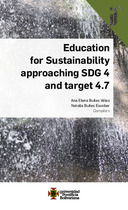Challenges to wearable design education from a sustainability perspective
Documentos PDF
Resumen
Current clothing purchasing behavior is not sustainable. Consumers are buying more clothes and wearing them for less time, leading to higher levels of carbon dioxide in the production, use and disposal of clothing. As sustainability becomes the norm in the fashion industry, consumers who play an important role in the life cycle of clothing need to understand the environmental impact of their clothing choices. Researchers call for more research on practices and methods to educate consumers and therefore apparel designers about the environmental impact of textile and garment consumption to determine and define design methodologies that lessen that impact (Abner et al., 2019; Armstrong et al., 2016; Connell & Kozar, 2012; Ha-Brookshire & Norum, 2011; Kang & Kim, 2013; McNeill & Moore, 2015). Awareness of the environmental issues associated with increased apparel consumption has influenced how the textile and apparel industry responds. As fashion sustainability issues have become more public and politicized, companies that produce and sell apparel and textiles have developed standards to determine the preferred attributes of sustainable products (REI Staff, 2018).
ISBN
978-628-500-077-5
Palabra/s clave
Apparel design
wearables
technology
consumer
Colecciones
- Capítulos de libro [762]
El ítem tiene asociados los siguientes ficheros de licencia:


